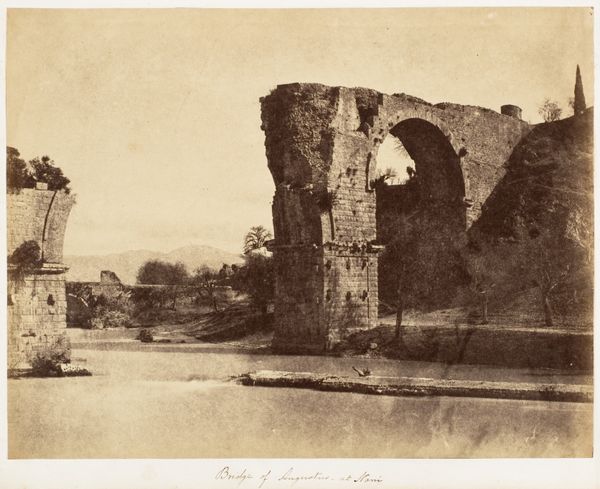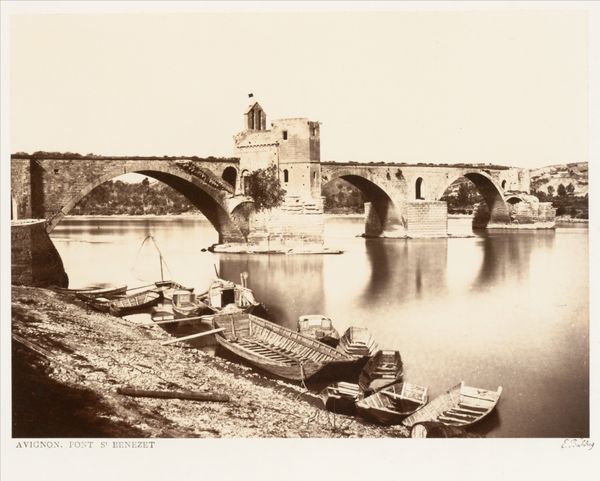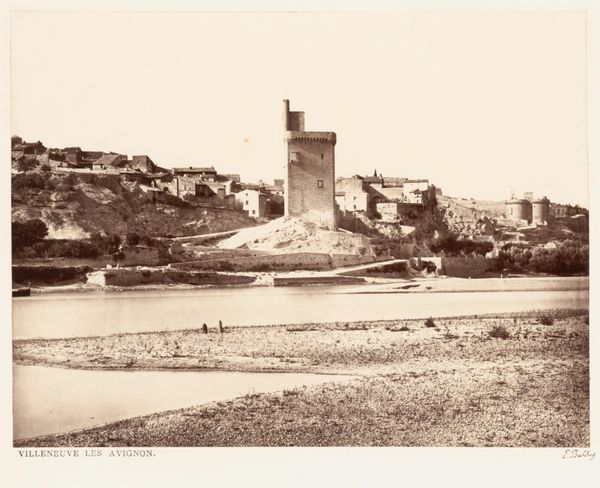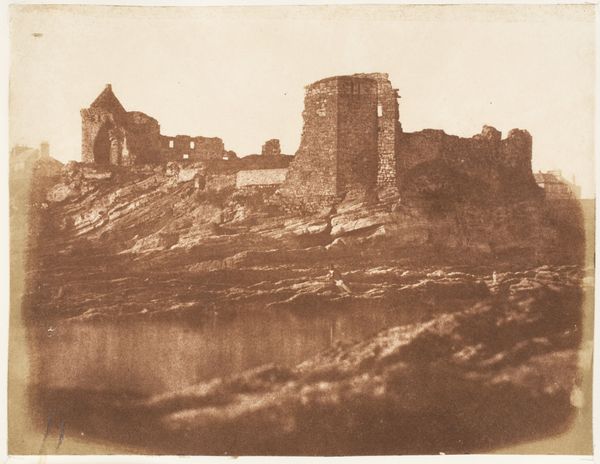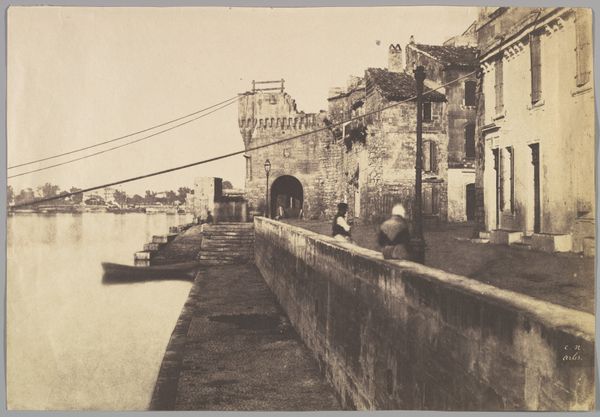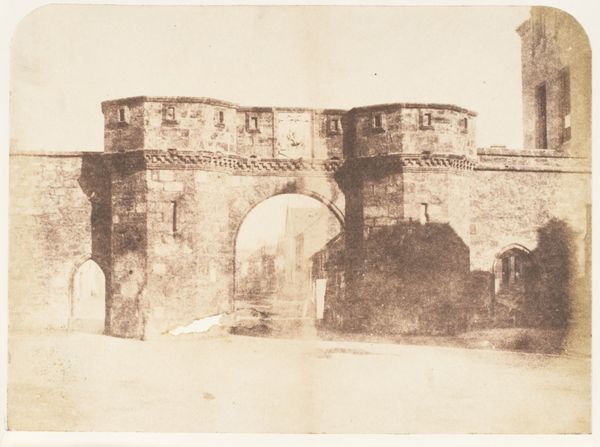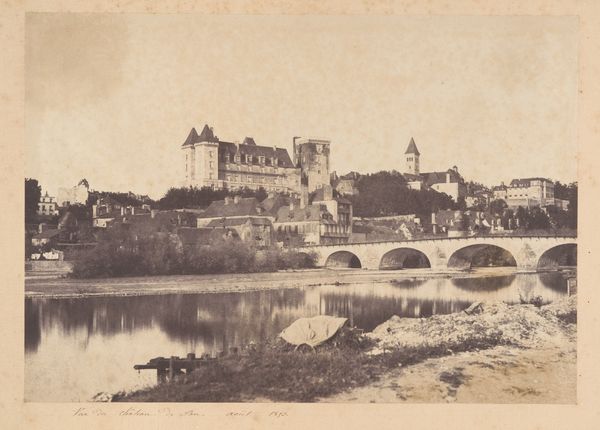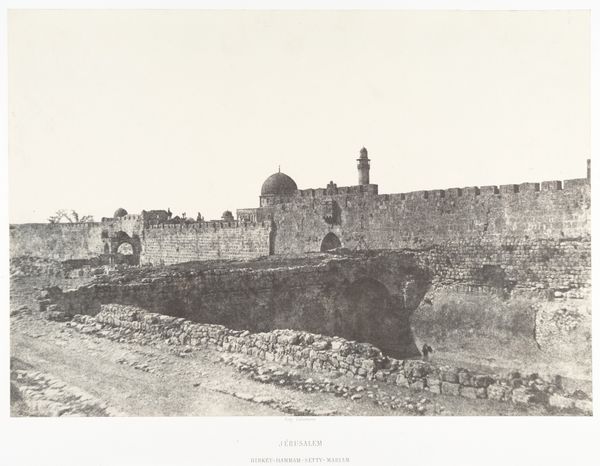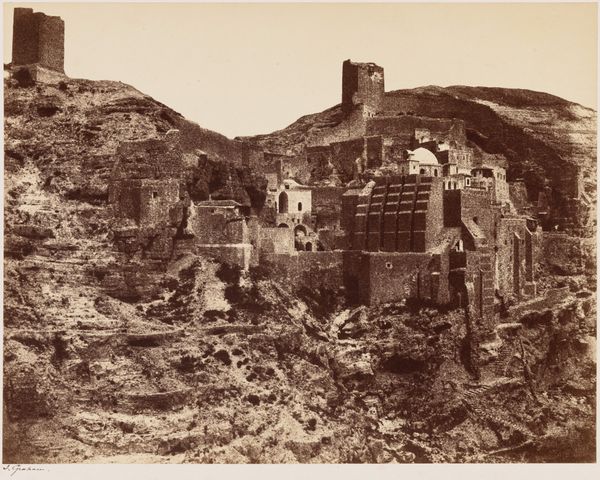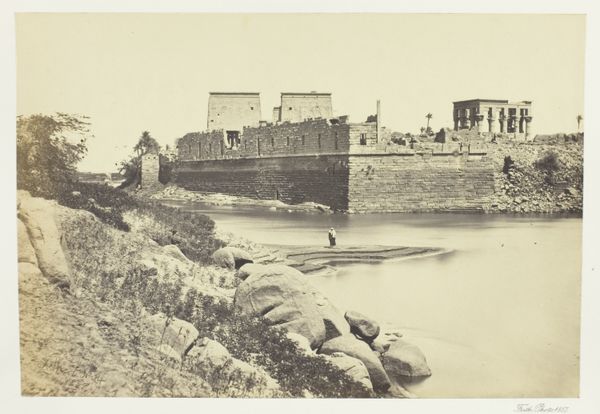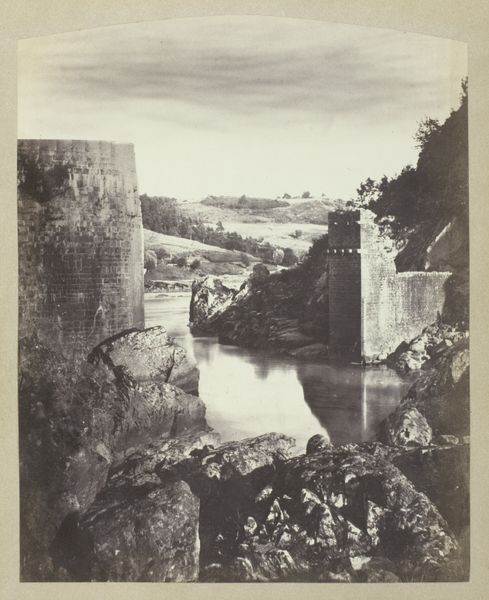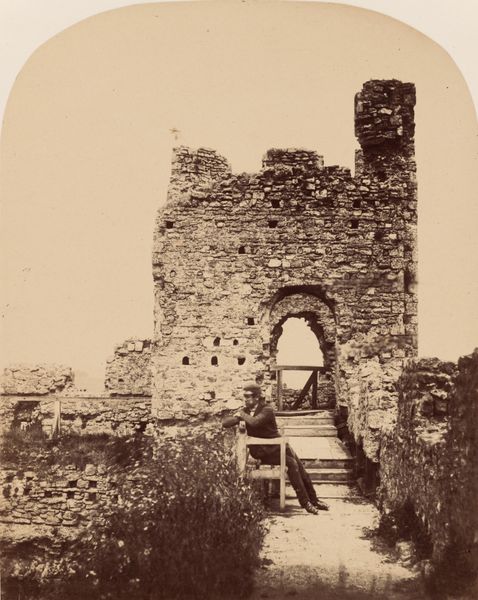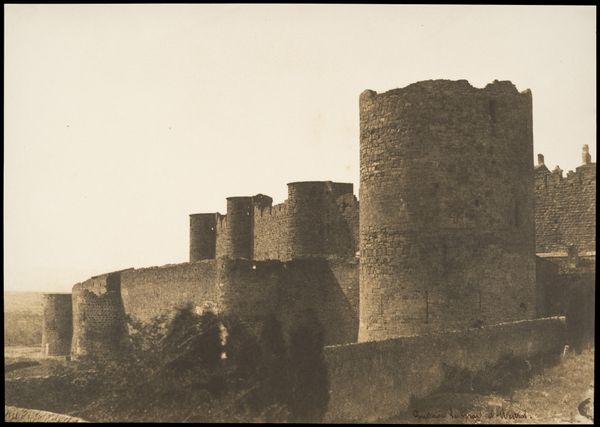
Dimensions: image/sheet: 26.1 × 33.7 cm (10 1/4 × 13 1/4 in.) mount: 28.1 × 35.7 cm (11 1/16 × 14 1/16 in.)
Copyright: National Gallery of Art: CC0 1.0
Curator: This gelatin silver print captures the Ponte de Nomentano, dating from the 1860s, by Gioacchino Altobelli. I’m immediately struck by the ruined texture of the stonework. It speaks of centuries of wear. Editor: It has such an evocative, almost romantic feel, despite being a photograph of a very real, utilitarian structure. Look at the stillness of the water mirroring the bridge. There's a serenity there, and also a sense of history. Curator: Absolutely. Notice the strategic positioning of the figures at the base; Altobelli contrasts human labor and leisurely assembly against the immemorial architecture. The photograph transforms into a commentary about how we occupy, interact, and impact places like this through use and time. The horse-drawn carriage on top is also worth noting, an element of relatively modern commerce contrasting against the older stones. Editor: And the bridge itself is such a potent symbol—literally a passage, but also representing the connection between different eras, different powers. Consider all the travelers who have crossed that point, all the stories that it has silently witnessed! The eye is really drawn to that central arched opening. Curator: Indeed. I'm captivated by the layers of materiality evident. The rough-hewn stones against the water, and how light plays upon these surfaces through the early photographic printing processes of the era. It brings forth considerations about craft—about how our interactions sculpt materials through a dialectic exchange. How each small addition to its infrastructure became a historical marker itself. Editor: Seeing those figures reminds us that history isn't just about stones and empires. The people are crucial, engaging directly with symbolic significance. Their mere presence along this symbolic threshold contributes to its meaning, its continuity. Curator: Precisely. The image is also speaking to the evolution of that relationship as the horse carriage above exemplifies changes of commerce. But both are part of the labor and transport. The decay, then, makes a visual statement. Its fractured surface reveals an active negotiation between different forces instead of stasis in history, society and environment, while the landscape is subdued around the image's focus. Editor: Looking closely has opened a deeper understanding of how bridges function as both connectors and powerful reminders of transition—across time, space, and cultural narratives. Curator: And for me, examining the methods used to craft the bridge as a symbolic, material structure in this photo only intensifies the meaning. Altobelli has documented not just a bridge but an idea, the idea of change manifested materially.
Comments
No comments
Be the first to comment and join the conversation on the ultimate creative platform.

